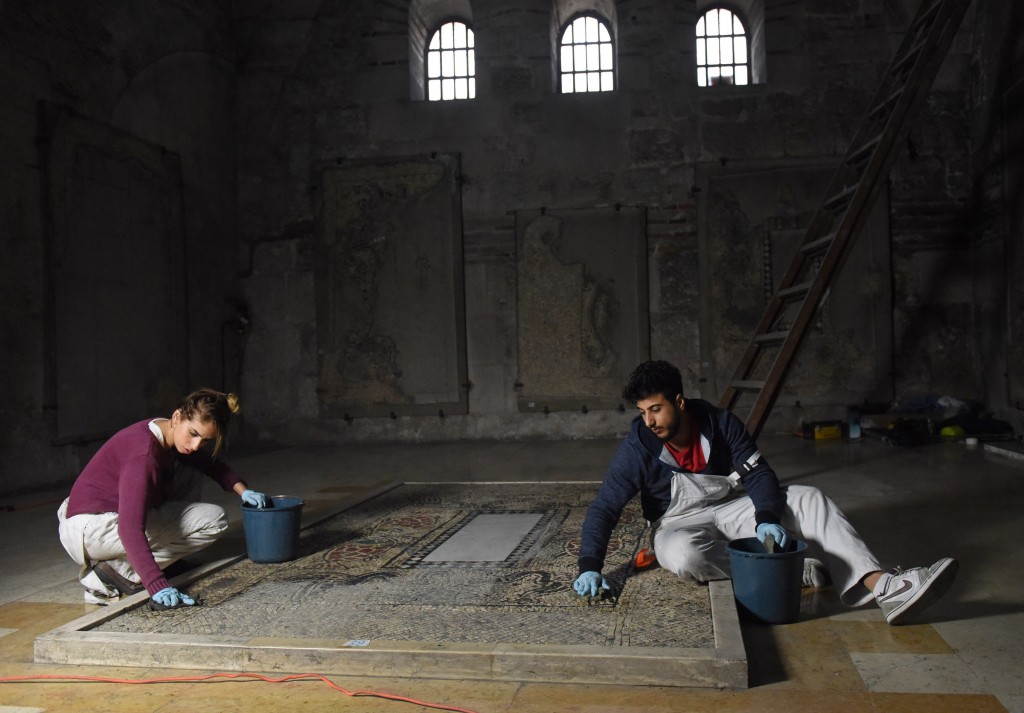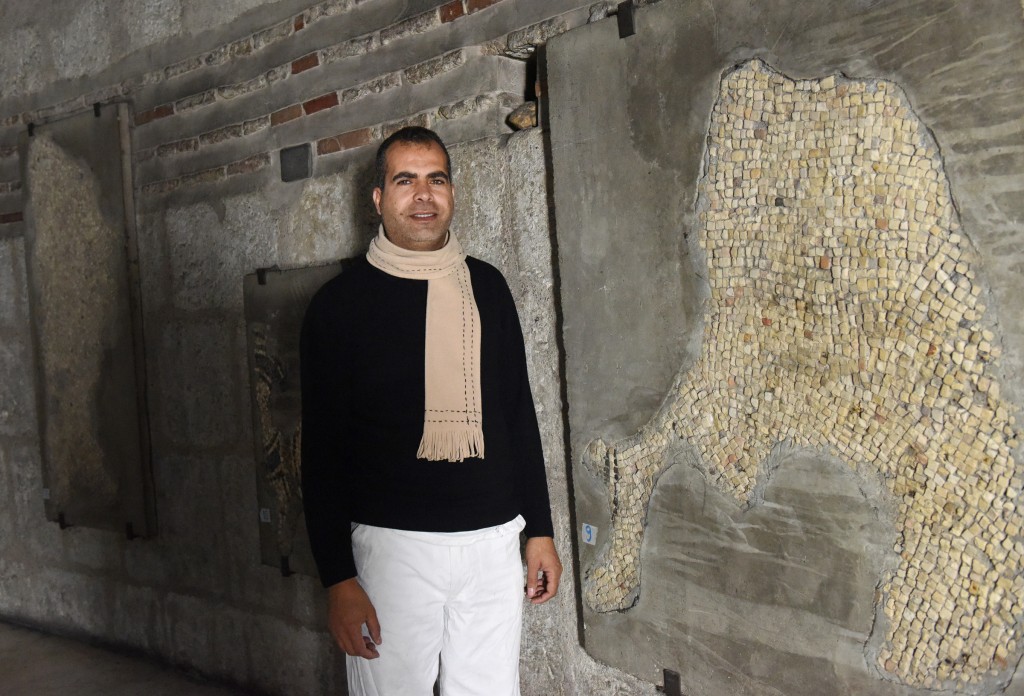By Judith Sudilovsky Catholic News Service

JERUSALEM (CNS) — It’s quiet and dark in the cavernous gallery above Jesus’ burial place in the Church of the Holy Sepulcher.
Raed Khalil and his small team of trained restorers have been patiently and methodically cleaning off centuries of soot and dirt from 39 ancient mosaics and two carved marble pieces, some of which may date back to the Byzantine period. All but one of the restorers are Muslim.
The framed mosaics hang from the thick stone walls of the Franciscan gallery, and some include both tiny stone and glass pieces. Some of the mosaics are missing big chunks; all have been brought to the church from different places, at different times. The true history of the works will not be known until they are fully researched, a process that will take about two years.
This is the second restoration project at the Church of the Holy Sepulcher the team has taken part in this year; workers have just completed restoring the colorful 1926 mosaics in the small Franciscan chapel at the 11th station, next to the spot where tradition holds the crucifixion of Jesus took place. They began that work in 2001.

“Before, people would come visit here but did not care about our work. I did not feel a reaction. But now they see the results, and I feel a reaction to what we are doing. The guides with pilgrims start talking about it and are so happy to see it,” Khalil said of the completed project.
The current project is being done in collaboration with the Association pro Terra Sancta and the Mosaic Center of Jericho.
“This is a very interesting job to work with our history,” said Dana Hamdan, a Muslim from Jerusalem who was been studying and working with the Mosaic Center for four years, as she meticulously washed off a layer of dirt from a piece of marble hanging on the wall. “Before I started here I didn’t know anything about the Christian religion, but now I have more information. Before I did not feel any connection to any of this, but now I do. These are historical places, and we are protecting them.”
“I am very happy I can secure a holy place,” added Anas Abutir, 23, also from Jerusalem.

Khalil said he appreciates the opportunity to work in such an important place of another faith.
“This is history. We must save it,” said Khalil. “This is important. Putting aside all the politics, the heritage remains. There are layers of history here. Before the Muslims there were Christians here, before the Christians there were Jews, before the Jews there were Canaanites. There were all these people living here in this place. Some people left, but the land remains, the culture remains. History is history. You can’t make a part disappear and say I am the only heritage.”
Khalil was among the first students of a three-year restoration course at the Mosaic Center of Jericho. The center, funded by an Italian nongovernmental organization in cooperation with the Palestinian Department of Antiquities, opened in 2000 under the scientific supervision of Franciscan Father Michele Piccirillo of the Studium Biblicum Franciscanum. One of the goals was to instill young Palestinians with pride and strengthen their identity with their national heritage.
“I started to understand our identity as Palestinians,” said Khalil. “I started to think in a different way. Whether it is Muslim or Christian, it is all Palestinian. I don’t think in terms of Muslim, Christian or Jewish. It is all cultural heritage.”
The students have worked on the restoration of mosaics in ancient synagogues in Jericho, West Bank, with the same care, he said.
Having received his master’s degree in mosaic restoration at Al-Quds University in Jerusalem, Khalil said he has had the privilege of being also able to work in restoration projects in Jericho and in the Syrian cities of Sweida and Aleppo. He said it has been very painful to watch not only the human loss in Syria but also the destruction of all the country’s national heritage in the form of its antiquities. Many of the projects he worked on have been destroyed by the Islamic State group, he said, shaking his head.
“They have destroyed the culture of Arab countries,” he said. “It is terrible. It destroys your mind to think of all what the people of Syria have lost.”
But while in Syria there is continuing strife and bloodshed, here, in the silence of the gallery, he and his team have been witness to the preparations for Easter and the celebration of the resurrection of Jesus. Clergy and pilgrims of various Christian faiths come to venerate the traditional site of Jesus’ burial. It has made the restorers feel a part of the celebration, he said.
“Everybody is cleaning, everything smells nice. I feel like I am a part of this. I am cleaning. I am preparing. This is the first time I have seen these preparations. To sit here in this place, to look down and see all this, is beautiful,” said Khalil.


